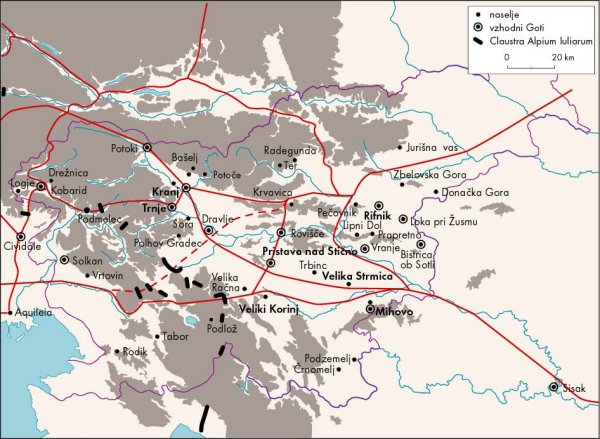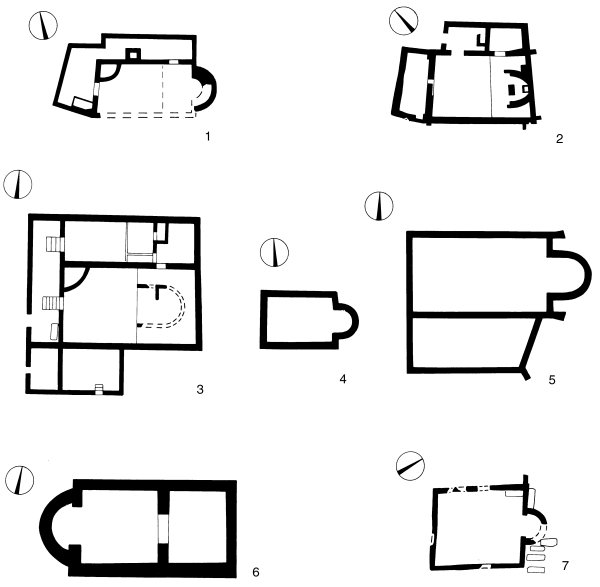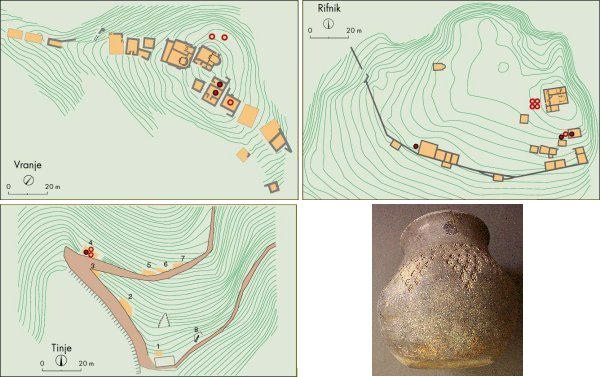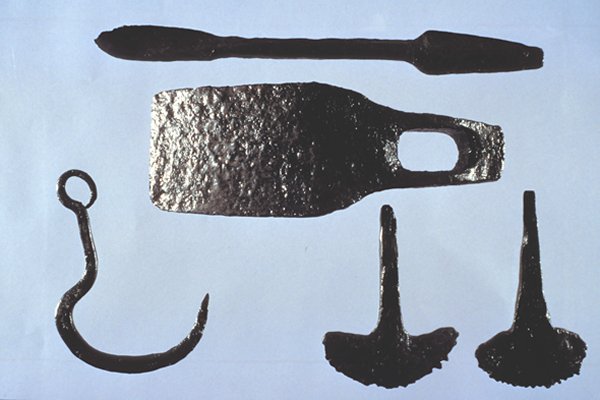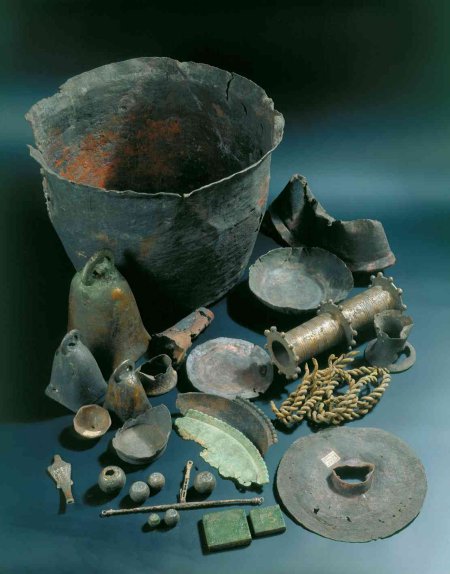 Institute of Archaeology Institute of Archaeology |
[Slovenian] |
| Home | Members | Programme | Projects | Laboratory |
| Database | Publications | Library | Links | Archive |
|
Programme - Late Antiquity LATE ANTIQUE SETTLEMENT PATTERN The main focus is the research of the Late Antique settlement pattern in the south-eastern Alpine region and Illyricum. To date we applied systematic research methods to define and confirm a whole spectrum of settlement forms, which extend from urban agglomerations over various rural settlements (fortified and not fortified) to sacral centres, military forts and refuges. Research, ongoing for decades already, continues to be upgraded with excavations of the large settlement of Tonovcov grad near Kobarid. Also, we continue to supplement the mosaic of the settlement pattern. This process demands systematic verification of archive data, field walking, reconnaissance and continuous perfecting in the methodology of documenting the discovered structures.
The results of this research are all in the final phase, along with the results of the research regarding the settlement pattern in the eastern part of the Roman Empire. Thus we are preparing the basis for a full presentation of the extremely variegated and dynamic settlement pattern of the Mediterranean during the Late Antiquity, which in many aspects exceeds existing settlement patterns.. Publications:
Contact: Slavko Ciglenečki Ongoing research of Early Christian architecture, the interior furnishings of these churches and small finds with Christian symbolism in Slovenia represents another important branch of our endeavours. This research has to do with the Early Christian churches discovered so far in Roman towns like Emona, Celeia and Poetovio, rural villae and in the fortified settlements.
On the basis of stratigraphy, complete assemblages of decorative elements and small finds, we supplement the chronological scheme of the sacral structures and reliably define the functions of certain component parts of the sacral architecture. Publications:
Contact: Slavko Ciglenečki SETTLEMENT PATTERN OF GERMANIC PEOPLES The research regarding the settlement pattern of the Germanic peoples in the south-eastern Alps present another important task. Mapping Lombard sites increasingly points to the presence of small Germanic communities in the otherwise densely populated and fortified settlements of the Romanized original settlers.
Publications:
Contact: Slavko Ciglenečki Closely connected to investigations of settlement patterns is also the basic research concerning the relevant material culture, thus allowing for a more reliable interpretation of the discovered structures. We are currently investigating Late Roman and Late Antique small finds from the fortified settlements in the south-eastern Alps with an emphasis on the material from the sites at Tonovcov grad and Korinjski hrib. The preparation of a monograph about Tonovcov grad brought about the processing of ca 2500 fragments of table wares, coarse wares and transport wares. Approximately 1500 pieces of metal small finds and other material (costume accessories, weapons, tools, house equipment) were also processed from the same site.
Contact: Slavko Ciglenečki TONOVCOV GRAD NEAR KOBARID The fortified settlement of Tonovcov grad represents, with its architecture, excellent state of preservation and material evidence, one of the largest and most important Late Antique settlements in the south-eastern Alps. Contact: LATE ROMAN HOARDS FROM GORA ABOVE POLHOV GRADEC Presented is a reconstruction of three exceptional hoards of tools and equipment, found in the years 1868, 1883 and 1935, and a publication of all preserved objects, kept in the National Museum of Slovenia in Ljubljana and in the collection of the Local museum of Polhov Gradec. To date only the second hoard was known, the publication of which (P. Petru, Arheoloki vestnik 18, 1967, 453-461) was incomplete and partly incorrect (for example, a wrong balance was included). All three hoards were probably buried before the middle of the 5th century. They contained numerous iron and bronze objects, for example parts of chariot wheels, woodworking tools (axes, saws), agricultural tools (a ploughshare, two four-tined hoes, hoes), kitchen equipment, ingots, steelyards, a balance with weights, a hollow bronze cylinder, bronze bells with marks and several bronze vessels. The study will be published in the publication From the Romans to the Slavs. Sites, which will be prepared by the archaeological department of the National Museum of Slovenia in Ljubljana. The German translation published in Arheoloki vestnik 56, 2005, pp. 293-368.
Contact: Dragan Božič |
